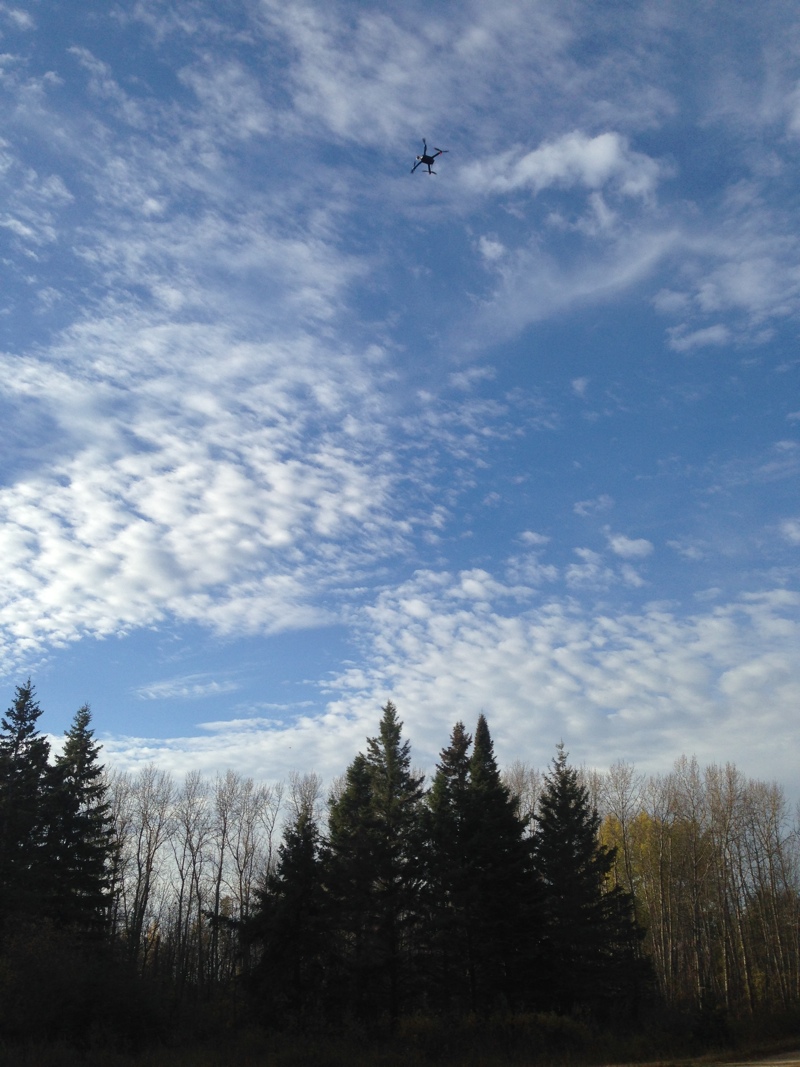Drones Spook Bears

Bears apparently find UFOs unbearable — airborne robots and other unidentified flying objects can make bear hearts beat four times faster, researchers say.
This finding suggests that greater caution might be necessary with drones flying above wildlife, scientists added.
Airborne drones — also known as unmanned aerial vehicles (UAVs) — are becoming increasingly popular, with Amazon suggesting they could deliver goods to online shoppers and tech giants such as Google potentially investigating their use to bring wireless Internet connectivity across the planet. Drones are growing more and more valuable to scientists as well, helping them research wildlife, including endangered species, in their natural settings over difficult terrain and from long distances. [8 Totally Cool Uses for Drones]
Animals often appeared to take encounters with these UFOs in stride. For instance, American black bears typically barely seem startled when a UAV comes near, the researchers said.
However, recently scientists in the Antarctic found that robots could stress penguins out, even if the birds gave no outward sign of their distress.
Now, another group of researchers finds that despite the calm demeanor bears may display in the presence of airborne robots, drones make bear heart rates soar, a major sign of stress.
"The magnitude of some of the heart-rate spikes were shocking,"study lead author Mark Ditmer, a wildlife ecologist at the University of Minnesota at St. Paul, told Live Science. "To see heart rates go from 41 beats per minute prior to the unmanned aerial vehicles' flight to over 160 beats per minute during the flight was far beyond what we expected."
Get the world’s most fascinating discoveries delivered straight to your inbox.
Ditmer and his colleagues noticed the heart-rate spike while studying bear hibernation. "Bears are able to hibernate for many months with only a little loss of muscle strength despite no food or water," Ditmer said. "Understanding how they are able to do this may help long-term patient care — human muscle atrophies after being bedridden for just a few weeks — or even space exploration."
The researchers implanted heart monitors in free-roaming American black bears to better understand how their hearts work. The devices were originally developed by the medical device firm Medtronic in Elizabeth, New Jersey, for use in people with abnormal hearts. To see the effects of humans — or drones — on the bears, the researchers also looked at data from GPS collars on the animals and investigated how bear heart rates changed when near human locales or flying robots.
The collars sent the scientists an email with each bear's location every 2 minutes while the implanted heart monitors, or "biologgers," captured every heartbeat. The researchers then programmed a UAV to fly to the bear's most recent location.
"It was always constantly windy in that area — northwestern Minnesota — so the UAV often was really fighting the wind, which required us to keep the flights rather short, about 5 minutes," Ditmer said.
The scientists admit their conclusions are based on limited data — "only four bears and 18 UAV flights," Ditmer said. But they felt they could not wait another year to gather more conclusive data before reporting their discovery "due to the meteoric rise in UAV use, especially for research and conservation," he said. "It should serve as a cautionary tale, and at least get people who use them thinking about the potential impacts they may have that might not be apparent."
The scientists did note that bear heart rates recovered very quickly after UAV flights.
"By no means are we advocating against the use of UAVs, especially for research or conservation," Ditmer said. "However, until we know which species are tolerant of UAVs, at what distance animals react to the presence of UAVs, and whether or not individuals can habituate to their presence, we need to exercise caution when using them around wildlife, especially at close distances."
The researchers plan to experiment with bears living in captivity with implanted heart monitors to see if they can get used to overhead UAV flight, "and if so, at what time scale that habituation takes place," Ditmer said.
The scientists detailed their findings online today (Aug. 13) in the journal Current Biology.
Follow us @livescience, Facebook & Google+. Original article on Live Science.



